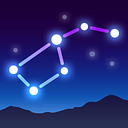The innermost planet in the Solar system — Mercury — reaches its peak visibility on March 24, 2020. Who will see the smallest planet with the naked eye? When is the best viewing time? Find out here.
Viewing opportunities
In the predawn sky on Tuesday, March 24, Mercury will reach its greatest western elongation of 28 degrees from the Sun. For observers, this means that the planet will reach its peak visibility in the morning sky of the year. This finest morning apparition of Mercury is an excellent opportunity for those living in the Southern Hemisphere to see the innermost planet with naked eyes. Mercury will be well placed for observation in the predawn sky several days before and after its maximum western elongation.
Due to the shallow angle of the morning ecliptic with the eastern horizon, which is observed on the days around the March equinox, Northern Hemisphere observers will not be able to see Mercury on March 24. The planet will climb higher in the morning sky at southerly latitudes.
When and where to see?
Want to find out when and where to see Mercury at its best morning apparition of the year? The easiest and the quickest way to find the planet in the sky is to use the astronomy app for stargazing Star Walk 2. The app will show you where to look to locate Mercury and will help you determine the time when the planet is visible in the sky above your location.
The elusive planet
Mercury lies very close to the Sun and never strays too far from the solar glare. Most of the time it’s hard to spot the planet in the sky even with telescopes and binoculars. The smallest planet can be easily identified in the sky only near its maximum elongation — greatest separation from the Sun. Not to miss noteworthy celestial events, turn on notifications in Star Walk 2 and receive reminders in time.
Feel free to contact us with any questions at support@vitotechnology.com.
Never miss the latest celestial events and astronomical news in the ‘What’s new’ section of the stargazing app Star Walk 2 💫
Clear skies!
